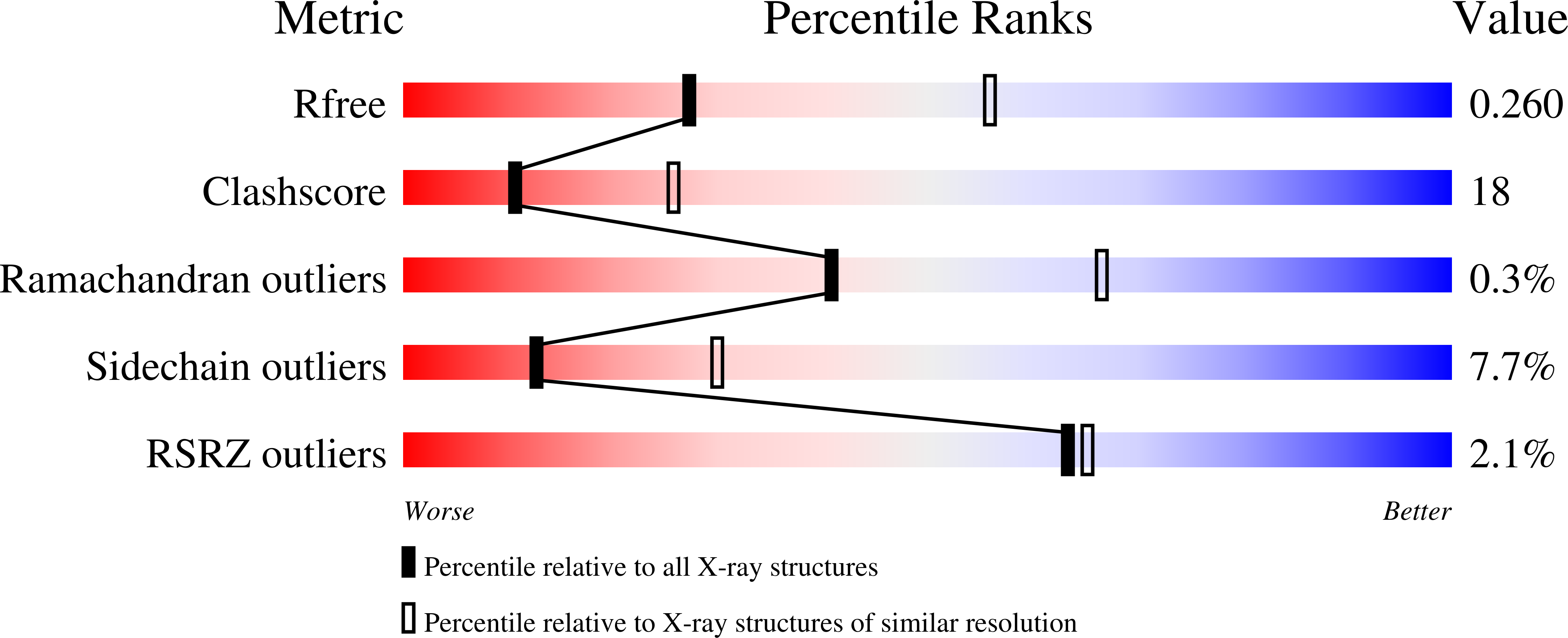Structure and Mechanism of ArnA: Conformational Change Implies Ordered Dehydrogenase Mechanism in Key Enzyme for Polymyxin Resistance
Gatzeva-Topalova, P.Z., May, A.P., Sousa, M.C.(2005) Structure 13: 929-942
- PubMed: 15939024
- DOI: https://doi.org/10.1016/j.str.2005.03.018
- Primary Citation of Related Structures:
1Z73, 1Z74, 1Z75, 1Z7B, 1Z7E - PubMed Abstract:
The modification of lipid A with 4-amino-4-deoxy-L-arabinose (Ara4N) allows gram-negative bacteria to resist the antimicrobial activity of cationic antimicrobial peptides and antibiotics such as polymyxin. ArnA is the first enzyme specific to the lipid A-Ara4N pathway. It contains two functionally and physically separable domains: a dehydrogenase domain (ArnA_DH) catalyzing the NAD+-dependent oxidative decarboxylation of UDP-Glucuronic acid (UDP-GlcA), and a transformylase domain that formylates UDP-Ara4N. Here, we describe the crystal structure of the full-length bifunctional ArnA with UDP-GlcA and ATP bound to the dehydrogenase domain. Binding of UDP-GlcA triggers a 17 A conformational change in ArnA_DH that opens the NAD+ binding site while trapping UDP-GlcA. We propose an ordered mechanism of substrate binding and product release. Mutation of residues R619 and S433 demonstrates their importance in catalysis and suggests that R619 functions as a general acid in catalysis. The proposed mechanism for ArnA_DH has important implications for the design of selective inhibitors.
Organizational Affiliation:
Department of Chemistry and Biochemistry, University of Colorado at Boulder, Boulder, Colorado 80309, USA.















